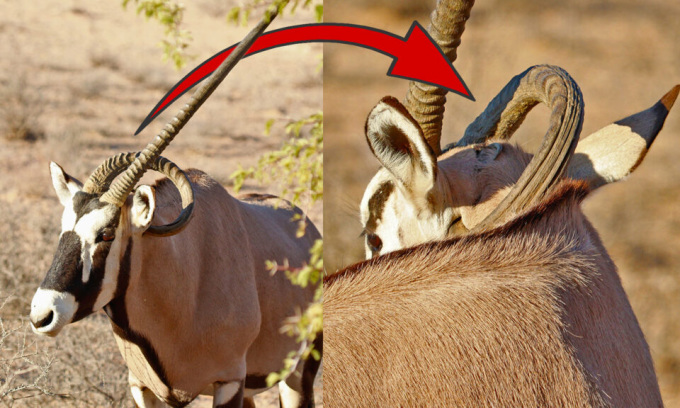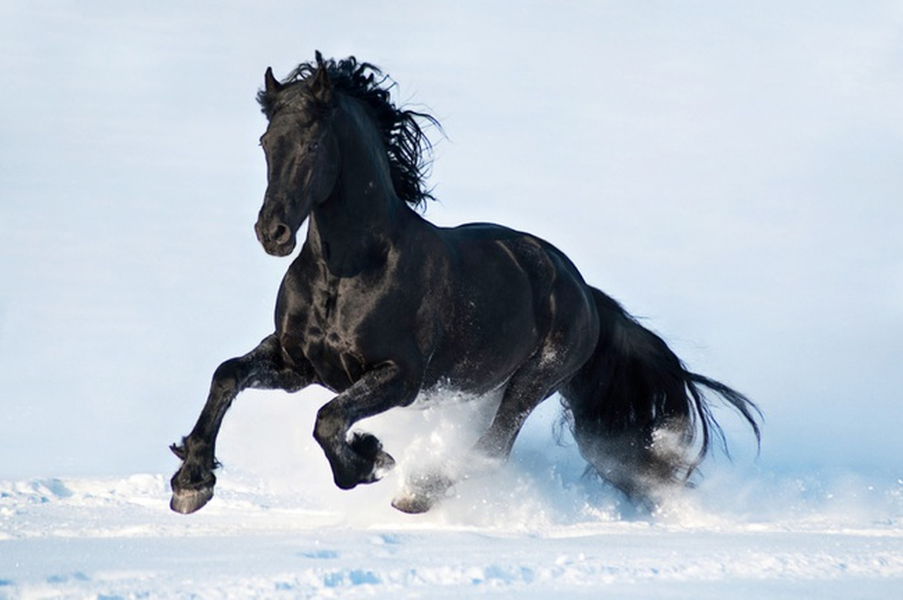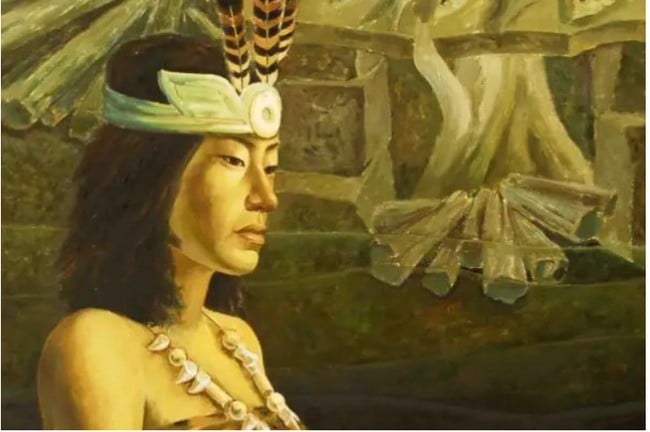Africa Unlike the long straight horns of its fellow antelopes, a gemsbok in the Kgalagadi Transfrontier Park has unusually curved horns.

Gemsbok antelope with curved horns. Photo: Latest Sightings
Pieter Venter came across an unusual-looking gemsbok during a visit to Kgalagadi Transfrontier National Park, Latest Sightings reported on September 10. "On the way from Mata Mata to Tweerivier, before the gates closed at 6am, we stopped at Lake Houmoed. It was the perfect time to take in the golden hour (the time just before sunset or just after sunrise) and hopefully catch a glimpse of some wildlife," Pieter said.
At the lake, Pieter spotted a gemsbok. "At first, it looked like any other gemsbok. But when we looked closer, we noticed something unusual - the animal's horns were piercing its neck and it was clearly in pain," he said.
The gemsbok ( Oryx gazella ), also known as the scimitar-horned antelope, is native to the arid regions of Africa. It has a muscular neck and shoulders, and white stocking-like legs with a black patch on the front of the front legs. It usually lives in herds of 10-40 animals and has a lifespan of about 20 years.
Both males and females possess characteristic long, straight horns. In males, the horns are typically thicker with a larger base, while in females, the horns are slightly longer and thinner.
Female gemsbok use their horns to protect themselves and their young from predators, while males use them primarily to defend their territory from other males. These impressive horns, which average up to 85 cm in length, are also the reason why they are widely hunted. Their horns can be made into trumpets.
For some reason, the gemsbok Pieter encountered had one of its horns growing abnormally. Instead of growing straight, the horn bent and stabbed the animal in the neck. “We wanted to help, but we knew that we couldn’t interfere with nature. So, after much deliberation, we made the difficult decision to leave and continue our tour,” Pieter said.
“I wish I could do something to help the gemsbok. But sometimes we have to let nature take its course and remember that every moment in the wild is a valuable lesson,” he shared.
Thu Thao (According to Latest Sightings )
Source link



















![[Video] Approval of the Master Plan for the Construction of a High-Tech Forestry Zone in the North Central Region](https://vstatic.vietnam.vn/vietnam/resource/IMAGE/2025/4/12/93e860e3957940afaaab993c7f88571c)














![[Photo] "Beauties" participate in the parade rehearsal at Bien Hoa airport](https://vstatic.vietnam.vn/vietnam/resource/IMAGE/2025/4/11/155502af3384431e918de0e2e585d13a)






























































Comment (0)